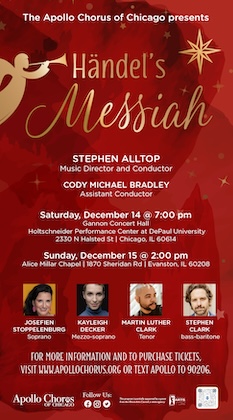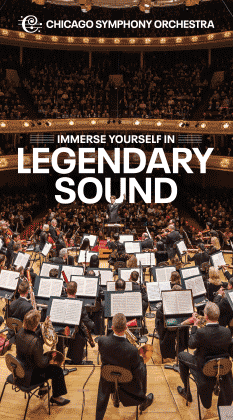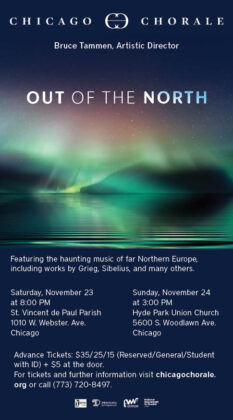Music of the Baroque wraps season with soaring performance of Haydn mass
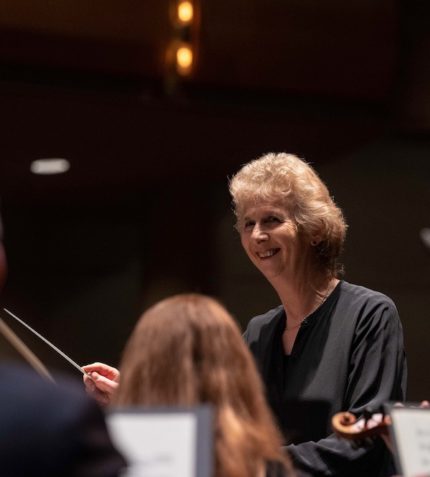
“We made it!” said Dame Jane Glover Monday night at the Harris Theater leading off Music of the Baroque’s final concert of the season.
The genuine sense of relief from MOB’s music director was clear. After two hectic pandemic seasons, MOB performed all of its scheduled 2021-22 concerts—live with in-person audiences—despite a myriad of challenges including Covid surges and shifting rules for public concerts.
The difficulties continued right up to curtain time Monday night. With some chorus and orchestra members testing positive for Covid, the masks were back on for all chorus members and non-wind players. But the show went on.
The major work on this program was Joseph Haydn’s Mass in B flat (Hob.XXII:13) , the penultimate of his six mature late masses. The work is known as Haydn’s “Creation” Mass via the composer’s witty self-quotation of the Adam and Eve duet from his Creation oratorio in the “Qui tollis peccata mundi” (“You who take away the sins of the world”).
Though not epic in length, the Schöpfungsmesse is among Haydn’s most demanding works in the genre, for soloists chorus and the orchestra. Yet under Glover’s scrupulous direction, nearly all the difficulties were surmounted in Monday’s polished and exuberant performance.
The chorus has the heavy lifting in this music and—in Andrew Megill’s first outing as MOB’s new chorus director—the ensemble sang with great fervor, flexibility and technical esteem, even in the trickiest hairpin turns. Unfortunately, the chorus’s masking, while necessary under the circumstances, made words too often indecipherable.
The estimable quartet, singing sans masks, was largely excellent. Mezzo Meg Bragle sang capably, though with a fitful lack of projection. Baritone Tyler Duncan was a sturdy presence, anchoring the low end with firm and incisive ballast.
Michael St. Peter—an impressive artist in Haymarket Opera productions— brought his graceful tenor and expressive poise to the Et incarnatus est. Rebecca Farley sang with bright tone, agility and dedication throughout. Smiling and swaying to the music in her seat, the soprano was clearly enjoying the performance even when she wasn’t singing.
Glover brought characteristic vigor to the pages of spiritual rejoicing, trumpets and timpani given a bit of extra emphasis and swagger. Yet she adroitly balanced the celebratory religiosity with attentive detailing of the somber moments—as with the delicacy of the violins at the start of the Sanctus and the lovely quartet singing in the Benedictus.
The first half of the evening offered a rarity with music of Joseph Haydn’s less prodigiously gifted younger brother, Michael. The Symphony in E flat (also known as his Symphony No. 26 or No. 34) shows the difference between workmanlike creativity and genius.
The spirited opening movement was given lively advocacy by Glover and the orchestra, highlighted by piquant oboe solos. But the composer’s shopworn devices—like the un-nuanced dynamic contrasts— go nowhere as the music settles into a kind of amiably humdrum busyness. Even in this lightly scored work, M. Haydn’s congested textures in the finale have the different instrumental lines fighting to be heard.
The central Adagietto proved the highlight with William Buchman’s elegantly expressive bassoon solo lifting the proceedings out of compositional mediocrity.
Glover, ever the connection-seeking scholar, paired Michael Haydn’s opus with Mozart’s Symphony No. 26, a product of the latter’s Salzburg years. Unlike Haydn the younger who was content to stay in Salzburg his entire life, Mozart loathed the city of his birth, which he viewed as irredeemably provincial, and couldn’t wait to escape to Vienna.
Mozart’s symphony—also in E flat— is cast in the style of an Italian sinfonia with three brief connected sections. Even in this eight-minute miniature, Mozart’s ingenuity and flair—not least in the pensive Andante and effervescent final Allegro—quickly put Michael Haydn’s earnest effort in the shade. Glover and colleagues served up a typically brisk and ebullient performance.
The evening started with a bonus of sorts via the Overture to Joseph Haydn’s opera Il mondo della luna (“The World on the Moon”), given a vital and bustling performance under Glover.
Haydn wrote 17 operas, all of which continue to lie in obscurity. Sounds like an exhumation job for Haymarket Opera.
________
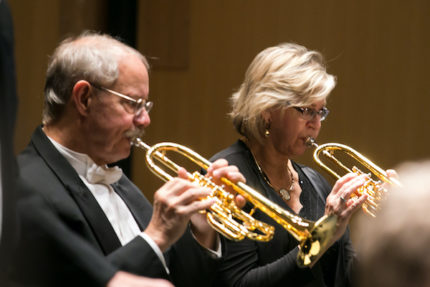
Monday night’s season closer marked the final appearance of co-principal trumpet Charles Geyer who is retiring after 47 years with Music of the Baroque.
Geyer’s gleaming tone and impeccable musicianship have been hallmarks of MOB performances nearly from the beginning with founder Thomas Wikman. Geyer has also logged time as a member of the Chicago Symphony Orchestra and Houston Symphony as well as an esteemed teacher (Eastman School, Northwestern and Rice University).
Happily, Barbara Butler, Geyer’s wife and colleague, will remain as Music of the Baroque’s principal trumpet. You can read her program tribute to Geyer here.
Music of the Baroque opens its 2022-23 season September 19-20 with Handel’s Jeptha. baroque.org
Posted in Uncategorized

